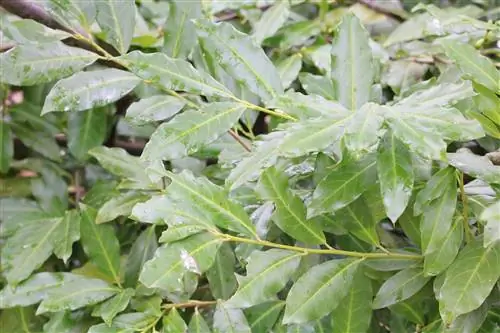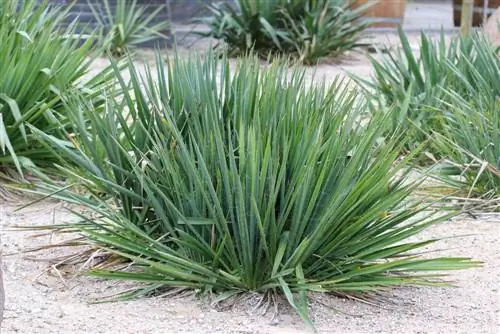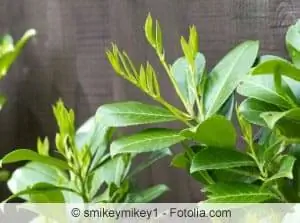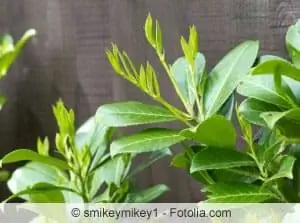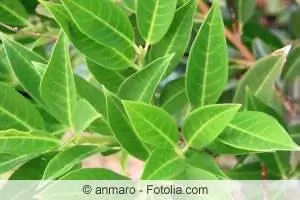- Author admin [email protected].
- Public 2023-12-17 03:39.
- Last modified 2025-01-24 12:45.
In this country there are only a few pests that can be dangerous to cherry laurel. Prompt treatment of the infestation is crucial for the plant's recovery.
Possible causes
There can be various causes for yellow and eaten leaves on cherry laurel. The most common include:
- Infestation by black weevil
- Infestation by blackthorn moth
- Gypsy moth infestation
- Shotgun disease
Bigmouth Weevil
The black weevil belongs to the family of weevils. Its biological name is Otiorhynchus. Visually it appears in a simple dark brown to black. This coloring provides it with natural camouflage from potential predators. However, some species also have yellow patterns, which can be found primarily on the head part.
The beetle is also characterized by:
- up to one centimeter tall
- wide, clearly visible trunk
- Ribbed pattern on the back
- no body hair
- no wings
In addition to the adult beetles, the larvae also pose a threat to the cherry laurel. In practice, it can therefore also be relevant to be able to distinguish these from beneficial larvae.
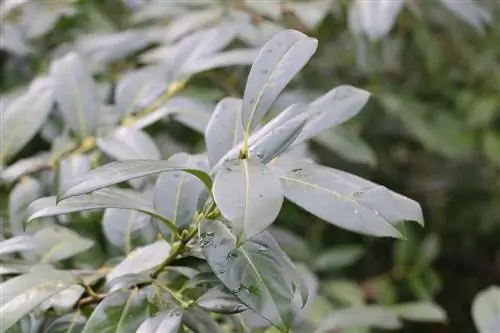
The grubs of the black weevil are characterized by:
- 0.5 to 1 centimeter body length
- white body coloring
- brown headboard
Lifestyle of the black weevil
The black weevil lives up to two years in nature and is mainly active at night. During the day it is therefore almost impossible to see the small insects with the naked eye. While it can only be found above ground in spring, summer and autumn, it spends the winters underground. By burying itself in deeper layers of earth, the beetle manages to protect itself from the frosty temperatures.
The propagation of Otiorhynchus proceeds as follows:
- Egg laying in March, June and July
- previous fertilization of the female not required
- Hatching times from April to May and August to October
- Larvae live exclusively underground
Note:
Especially in autumn after the end of the hatching period, a weakening cherry laurel must be examined for larvae of Otiorhynchus on the root system. An infestation can be recognized by roots that look eaten.
Appearance of the blackthorn moth
The sloe brush moth (biologically: Orgyia antiqua) is reminiscent of a small brush at first glance due to its bushy hair. In terms of color, it is predominantly a neutral gray, which is complemented by a red-black pattern.
Other visual features are:
- up to three centimeters long
- completely whitish hair
- brush-like tufts of white hair from the fourth to the seventh body segment
Appearance of the gypsy moth
The gypsy moth only occurs very rarely on Prunus laurocerasus. Lymantria dispar is extremely easy to recognize visually, with a body length of up to eight centimeters. The caterpillar's primary colors are gray and yellow, with the dorsal side being covered with red and blue warts.
Malicious images
The damage caused by an infestation with black weevils, blackthorn moths or gypsy moths is easy to overlook at the beginning. The feeding spots usually start at the edges. Upon closer inspection, they give the appearance of small bays or semicircles carved into the leaf. Over time, however, the food spreads irregularly into the interior of the leaf. In addition, in most cases the leaf also brightens to a light green or yellow.
But an infestation can also be seen underground if the appropriate examination is carried out. The larvae of the black weevil live underground and feed primarily on the roots, which are then eaten. As a result, the root system becomes increasingly sparse and thinner.
Combat
Various methods have proven successful in practice for combating insect infestations. Using an insecticide is rather counterproductive. The commercially available products are particularly impressive because of their generalist effect on many domestic insects. In addition to the pests, this also damages many beneficial insects.
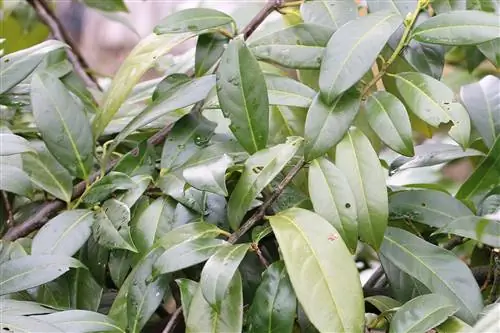
The following options are among the most effective and gentle treatment options. In order to achieve complete elimination of the pests, the treatment should be carried out several times a year and for at least two to three years.
Collect
Both the blackthorn moth and the gypsy moth are diurnal insects. In addition, they are not shy and can therefore be found on the leaves of the cherry laurel almost all day long. With the help of a glove, the pests, which are several centimeters in size, can be easily collected and relocated.
Flower pot with wood wool
Due to their nocturnal activity, the adult weevils retreat deep into the cherry laurel during the day. However, the dense vegetation makes it difficult to find the insects. In practice, it has therefore proven useful to place a flower pot filled with wood shavings below the bush. This serves as a place for the insects to retreat throughout the day. In the early morning these can then be moved to another location along with the vessel.
Note:
Basically it is also possible to collect the beetles individually. However, due to their nocturnal activity and small body length, this is extremely difficult. It is therefore only recommended in the initial stages of an infestation.
Nematodes
Nematodes are among the most effective methods against hungry larvae. They are particularly effective against Otiorhynchus. The beneficial insects, also known as roundworms, react extremely aggressively to the larvae. Due to the infestation of these, they now serve as hosts for the nematodes. After a short time, the larvae die in favor of the worms, which remain in the soil.
Natural predators
The black weevil, the blackthorn moth and the gypsy moth have many predators in nature. In addition to hedgehogs, shrews and moles, this also includes various species of birds. By offering appropriate species-specific housing options, the aforementioned animal species can also be kept in the home garden. These include:
- Feeding and watering places
- Nesting and incubation boxes
- Heaps of earth, wood and leaves
- Insect Hotels
- Natural stone walls with retreat options
- Flower and crop diversity
Additional care measures
In addition to fighting the pests themselves, care for the plant should not be neglected. The larvae of the black weevil in particular cause major damage to the roots, which in the worst case can lead to the death of the entire plant. In order to avoid additional illnesses, we recommend:
- remove eaten leaves
- cut off gnawed root parts
- Replace substrate within a generous radius
- Administer additional fertilizer
Tip:
Both the cut plant parts and the removed soil should not be disposed of in organic waste or compost. Ideally, it should be disposed of in a separate bag with residual waste. This prevents the pests from spreading again in your own or someone else's garden.
Shotgun disease
Shotgun disease results from a fungal infection that occurs particularly as a result of high humidity. The deposition of spores on the leaves leads to circular yellowing of the leaves. As the disease progresses, these parts of the plant turn brown and fall out of the leaf. What remains is leaves containing bullet holes.
Combating shotgun disease
Fortunately, shotgun disease is not a life-threatening disease. In practice, the perforated leaves are more of a visual flaw.
The following measures are recommended for effective treatment:
- cut off diseased leaves
- spray with a suitable fungicide
- enable good ventilation of the plant
- Add moisture exclusively to the root area
Tip:
To avoid transferring fungal spores to other plants, the tools used should be thoroughly cleaned and disinfected.
Prevention
In order to prevent a possible infestation, it is primarily recommended to take action early on. Before purchasing new plants, they should be inspected urgently for any leaves that have been eaten. This prevents introduction into the native plant population. In addition, the plants should always be thoroughly examined on a regular basis. In addition, the aforementioned methods of combating can also be used preventatively.

